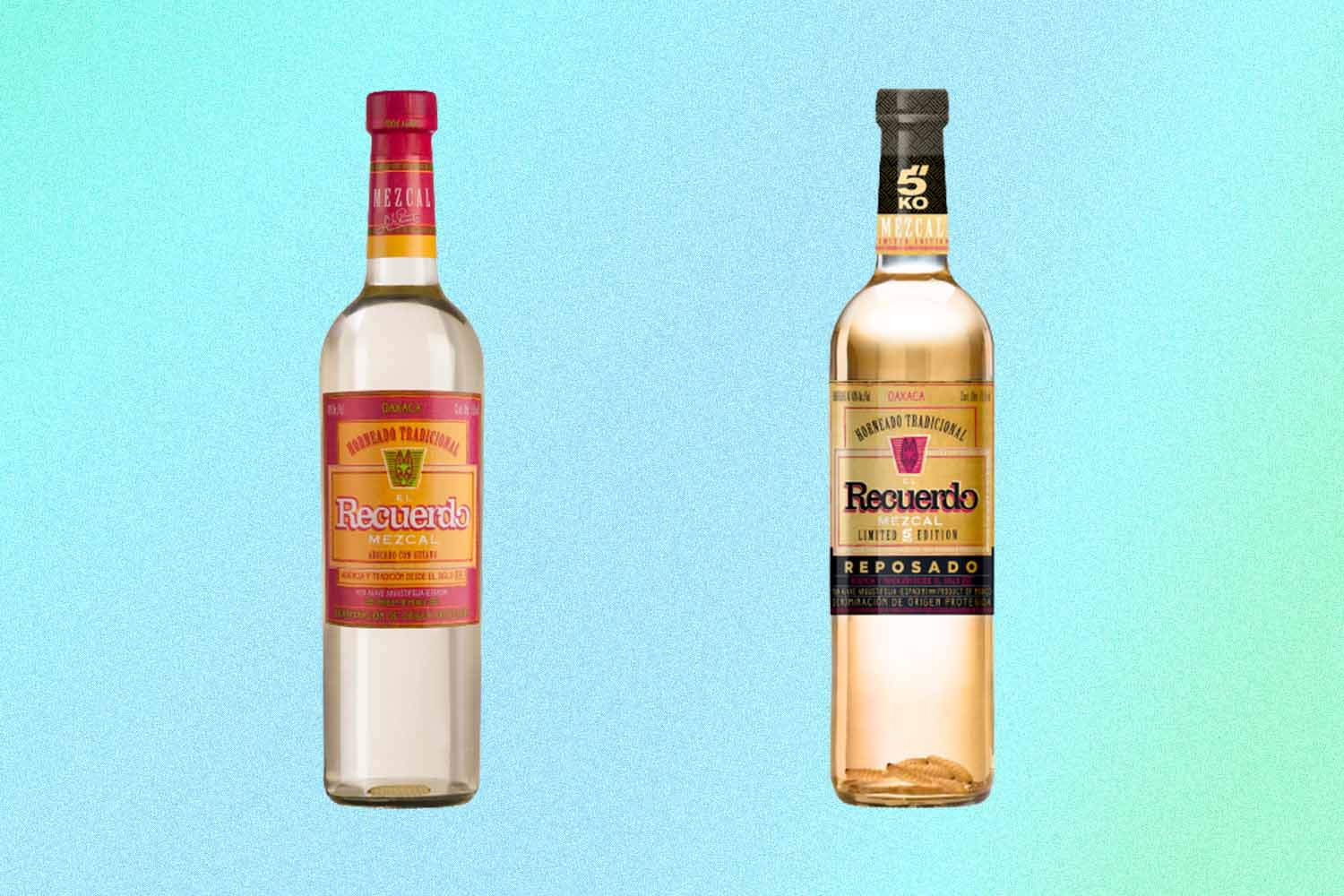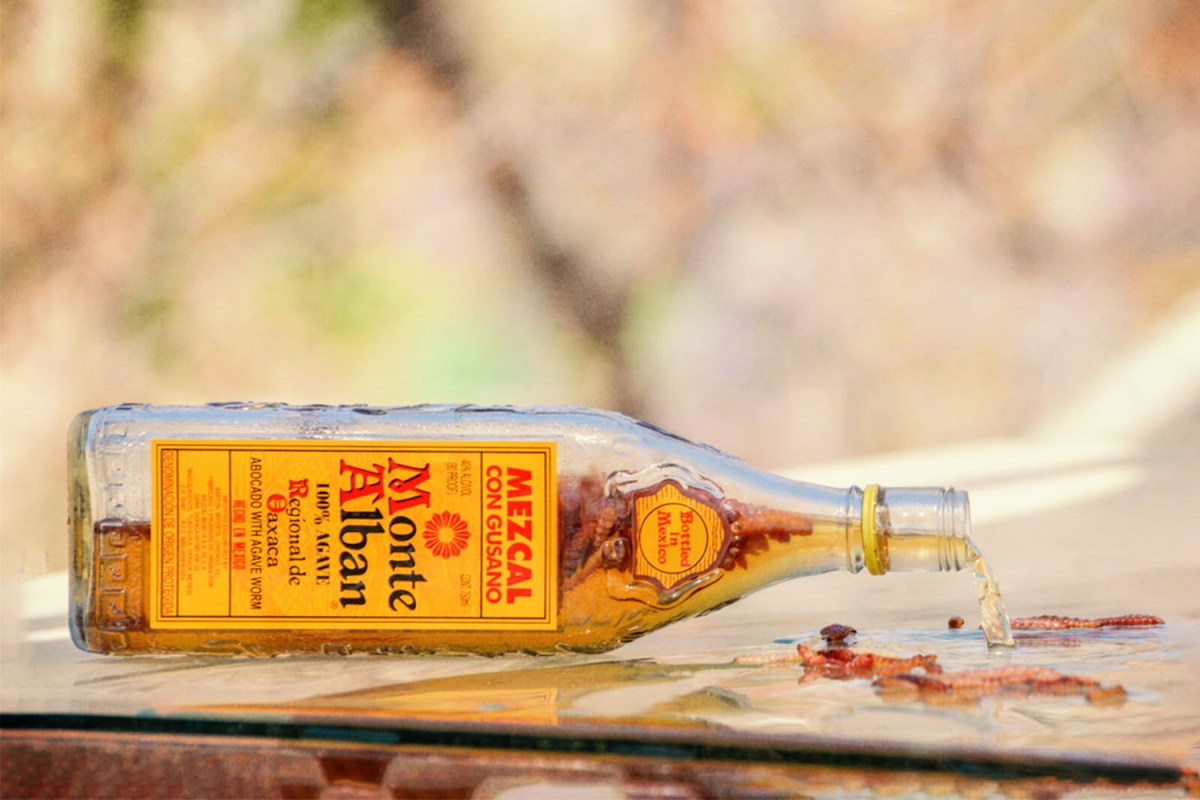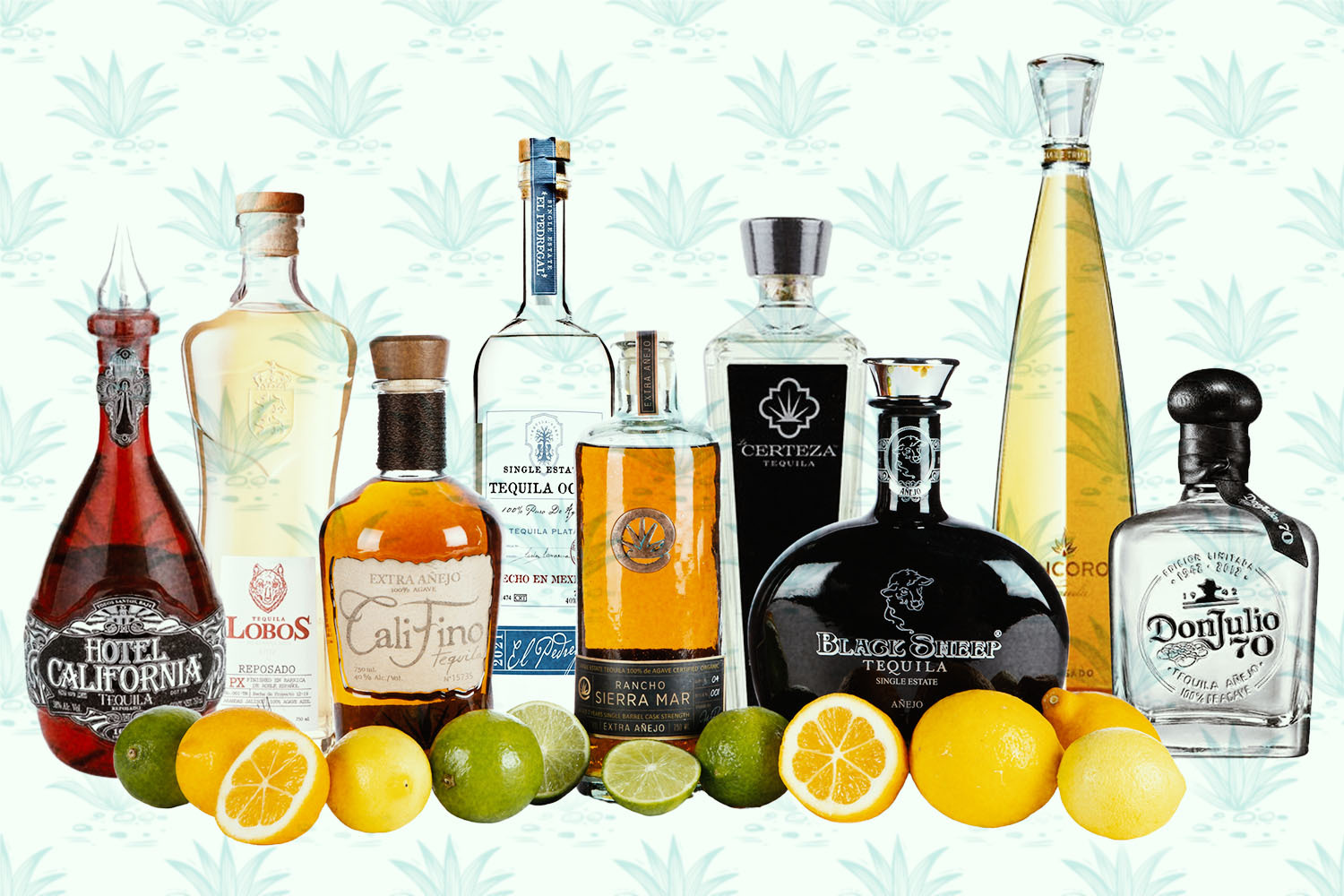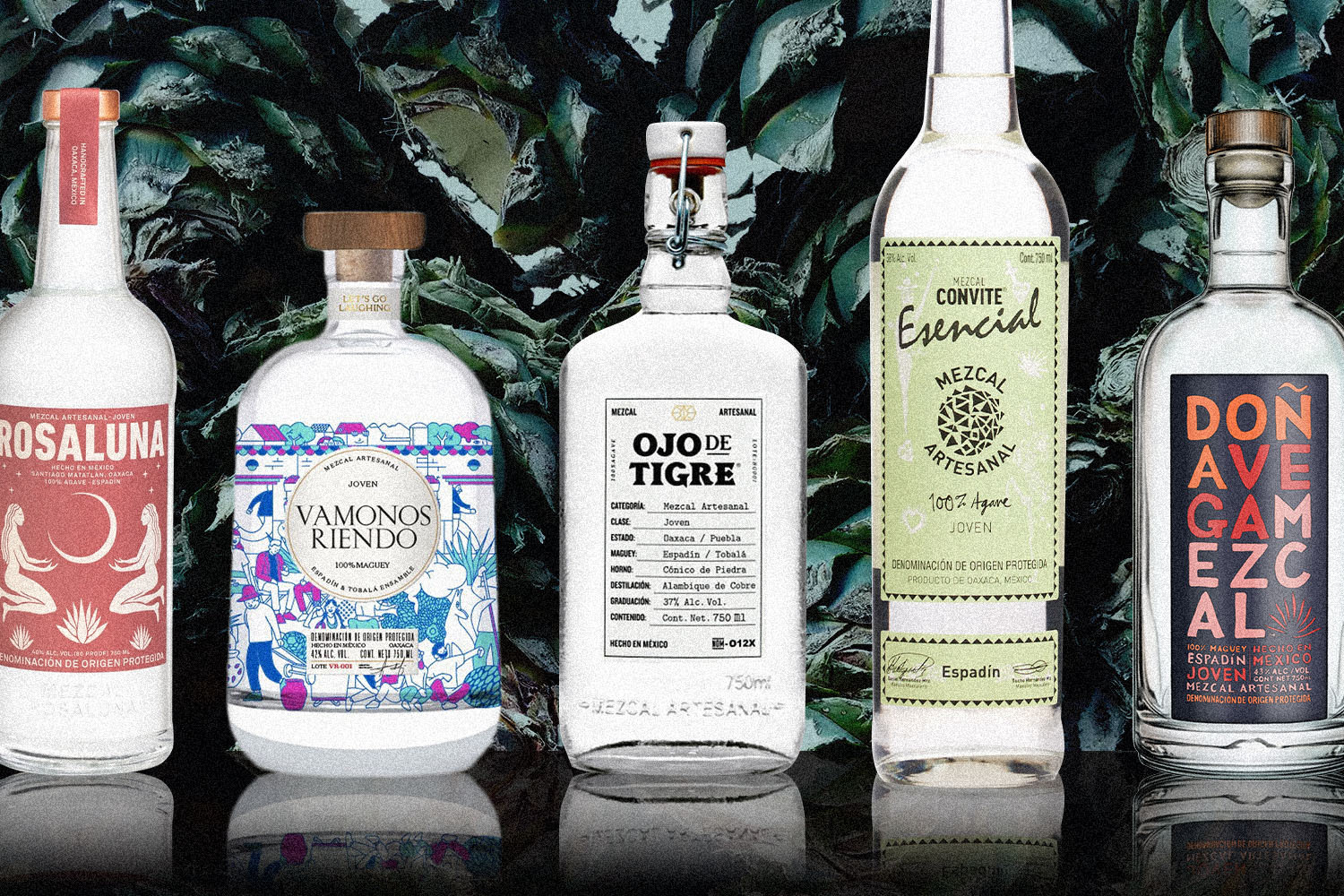Lou Bank is the founder of SACRED, a not-for-profit corporation that helps improve the quality of life in the rural Mexican communities where heritage agave spirits are made. He’s also the co-host of Agave Road Trip (with Chava Periban), a podcast that helps bartenders better understand agave, agave spirits and rural Mexico, and the author of El Gusano, a comic book about a boy who transforms into a human-sized gusano.
“The smoky tequila with the worm in it.”
That’s what most of the world thought mezcal was a couple of decades ago, because that’s all that was available outside the rural Mexican communities where it’s made. And although “mezcal con gusano” is less than 8% of what’s on the market today, it’s still fairly common for people to think of mezcal as “that stuff with the worm.” Which begs the question…
Who thought it was a good idea to put a gusano into mezcal?
First, it’s not really a worm. It’s more of a grub or a larva — you know, the thing that turns into a moth. It’s usually a red one, though sometimes you’ll see the white ones in mezcal. I could tell you the red one is of the species comadia redtenbacheri and that the white worm, which is the one commonly found feeding off the agave plant, is aegiale hesperiaris. But really…the red one and the white one.
Why do they put the gusano in mezcal?
In Mexico, the gusano can be considered a delicacy when prepared properly. I had a plate of pan-fried and seasoned gusanos at the four-star Casareyna in Puebla Centro years ago and that dish brings me back there every trip. But you don’t have to go the four-star route to find gusanos on the menu in Mexico — they’ve been a staple for centuries.
When did gusanos make their way into agave spirits?
Search on the internet and one answer comes up pretty frequently: that Jacobo Lozano Paez invented the idea in 1950 as a marketing angle for his brand, Mezcal Gusano de Oro. Not to throw a fellow Chicagoan under the bus, but it appears this false narrative started with “The Straight Dope” columnist Cecil Adams in a 1999 piece.
Why is this a false narrative? Gusano de Oro was trademarked in 1948, so that happened two years before Adams’s claim of 1950. As well, the competing brand Legitimo Mezcal de Oaxaca con su Propio Gusano (yeah, that’s a mouthful) was trademarked in 1944. As the name suggests, it also included “the worm.”
So the gusano wasn’t a marketing ploy?
It’s possible it is a marketing ploy and simply started with Legitimo or some earlier brand. Like so much of the beautiful cultural heritage of rural Mexico, there’s little to no documentation to support any of the theories.
Until 1994, nearly every bottle of mezcal legally exported to the USA had a gusano in it. Or sometimes two. Then Ron Cooper educated us about heritage agave spirits with his Del Maguey Mezcal. He sparked the world’s interest in the breadth and depth of traditional mezcal. Simply by using that phrase, though — “traditional mezcal” — suggests, in that context, that mezcal con gusano isn’t traditional.
Maestro mezcalero Eduardo Angeles of Lalocura has a different view. Lalo, as he is known to his friends, believes the practice dates back a hundred years or more. “My theory is that the mezcal with gusano has its origin shortly after the Mexican Revolution,” he says. “It may also have been made before that, but it became far more generalized after the revolution. I think that it is linked to the religious parties in the towns in honor of each town’s patron saint.”

So adding the gusano is a grand Mexican tradition?
Is it? Obviously, we can verify a commercial product existed at least back in 1944, courtesy of Legitimo Mezcal, and maybe they weren’t the first. But until Mariano Azuela’s 1949 novel Sendas Perdidas, all published references I could find that include both “mezcal” and “gusano” are separate and culinary in nature; basically, somebody went to Mexico, drank some mezcal and ate some gusanos. The fact that the gusanos were presented for eating and yet show up nowhere as being in the mezcal suggests that, possibly until the 1940s, no one was putting gusanos into mezcal for commercial purposes.
But there’s also a rich history of mezcaleros adding stuff to their mezcal, both during and after distillation. Sometimes that’s for medicinal purposes, where the adjunct is most often plants; sometimes it’s for ceremonial or celebratory purposes, where it’s most often fruits and proteins, such as turkey or chicken. And there’s a lot of crossover between those two purposes, too.
Given how often I’ve been told that gusanos are an aphrodisiac, it doesn’t take a great leap to imagine that someone, somewhere, would have thrown some gusanos into their finished mezcal to make a medicinal extract for erectile dysfunction — vino de Viagra, if you will. Or thrown some of the gusanos that live off their agave into the still to make a pechuga that forces the grubs to earn their keep.
To be clear, that’s speculative. To a great extent, this is all speculation. Here’s another theory: The Mexican government asked farmers to send them samples of bugs that plagued their crops. “If the specimens have a soft body (such as worms),” they wrote in Agricultura Técnica en Mexico, Volume 1, “they should be placed in a bottle with alcohol, tequila, mezcal, or 10% formalin. Before sending the copies to our offices, add inside the container enough cotton or Kleenex paper to absorb the liquid. In this way the insects will be kept moist and in case the bottle breaks in the mail, there is no danger of the liquid spilling out.”
Now, this call for grubs was published in 1955, well after Legitimo Mezcal was in the market. But it’s not hard to imagine that this was a longstanding policy of the Mexican government, especially following the Mexican Revolution, which returned farmland to Indigenous people. So maybe that was a policy established in the 1920s? And some agavero kept putting off sending in his gusano sample…and then finally drank it?
It’s also interesting to note that you don’t see mezcal con gusano being made outside of Oaxaca. (I haven’t, anyway.) But I have seen mezcal with a scorpion in the bottle, up in Durango, and that appears to be a reflection of the Oaxacan gusano practice.
And then there’s xumilin. Damian Meneses of El Tigre speculates that the gusano was probably dropped into mezcal bottles long before it was commercialized. His theory is based on what he’s seen in his native Guerrero with another pest: the xumilin, or chumilin, a sort of south-of-the-border stinkbug. In parts of Guerrero, they’ll occasionally throw one into a mezcal bottle in the same way the Oaxacans throw in the gusano.
“Now and then, when you’re cutting [agave], you can find a xumilin or two in and around the plant, and usually there is mezcal available to those doing that work of harvesting the [agave],” he says. “So sometimes the workers will drop a xumilin in the mezcal.” So maybe it’s kind of like ad hoc spice done on the fly (pun intended) for your mezcal? Created by workers? That sounds plausible.
Can gusano spice up other drinks?
Why, yes! Agave can yield both distilled and fermented drinks. Spirits like mezcal and tequila are made by fermenting the cooked hearts of the agave. But if you don’t want to go to the trouble of cooking the plant, you can just carve a huge hole into its center and harvest fresh, sweet sap. That sap will ferment into delicious pulque. It’s common to mix pulque with fruits to make what they call “curados,” a beverage that would dethrone smoothies as the fitness drink of choice if it weren’t so volatile. But the Mexican gourmands didn’t stop at adding fruits to their pulque. As pulque researcher Gonzalo Alvarez says, “I’ve seen and tasted pulque that is prepared with worms, chiles and salt that have been ground together with a mortar and pestle. So I guess you could call that ‘pulque de gusano.’”
The final world on the gusano
Are gusanos a gimmick, a tradition, a resource to maximize flavor or one to mask imperfections in the mezcal? Should the worm be denounced, embraced or just studied to better understand mezcal’s history? Most likely the gusano wormed its way into these bottles to remind us that Mexico’s culinary history is diverse and conflictive, informed by religion, local and global markets, regional taste, and sheer improvisation. The artisans who make what we know as mezcal, tequila or agave spirits are still at work learning more about the resources they have at hand and how to integrate them into their centuries-old traditions. The gusano is there to tell us that agave spirits are and have always been in flux.
And now, here are five mezcal con gusanos I recommend:
- Agave de Cortes Reposado con Gusano
- Monte Alban Mezcal con Gusano
- Recuerdo Mezcal Abocado con Gusano
- Recuerdo Mezcal 5″KO Limited Edition Reposado (with **5** gusanos)
- Wahaka Reposado con Gusano
Additional reporting by Chava Periban
Every Thursday, our resident experts see to it that you’re up to date on the latest from the world of drinks. Trend reports, bottle reviews, cocktail recipes and more. Sign up for THE SPILL now.
















